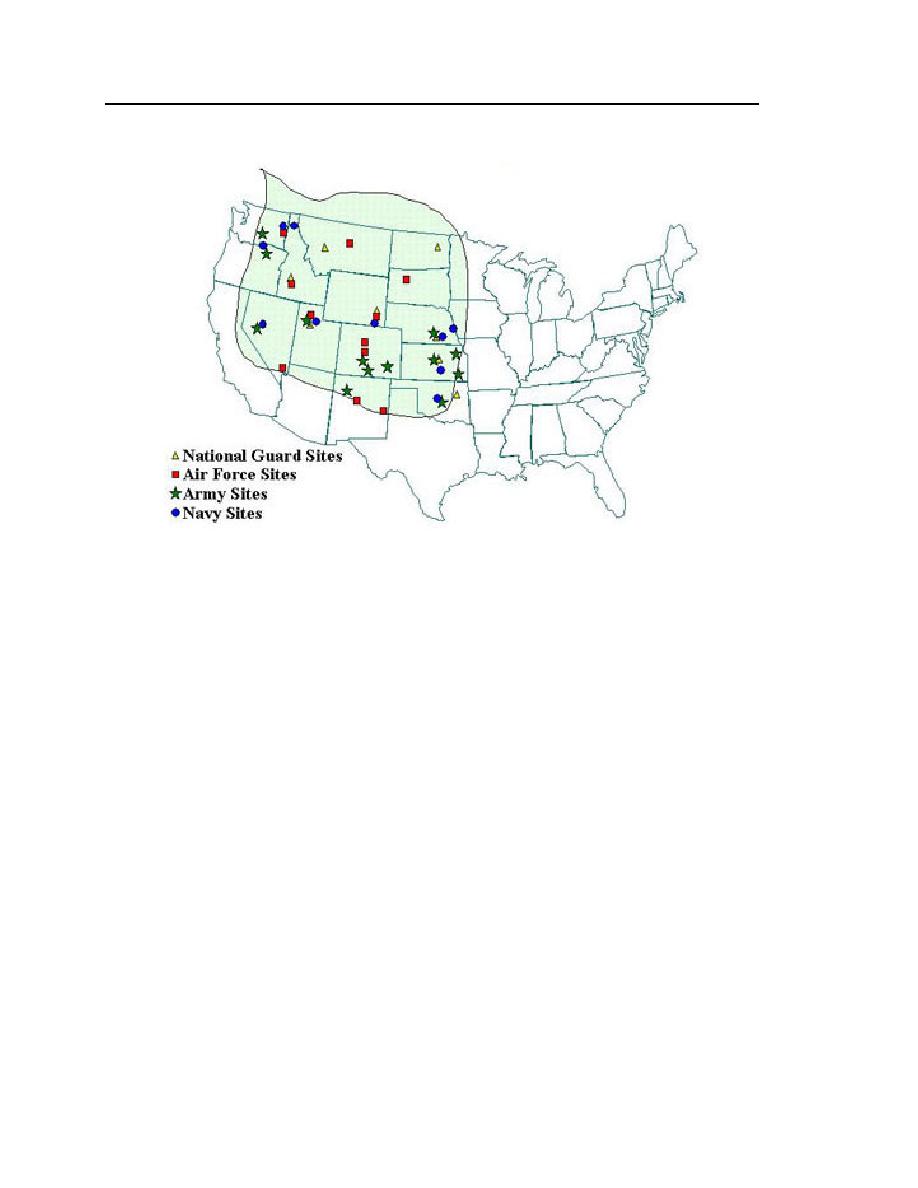
18
ERDC/CRREL SR-02-2
Figure 1. Adapted area for SERDP-select germplasms. All plant materials
were collected within this area.
While our current emphasis is on improving the resilience of native species
present on training lands, the research program began by looking primarily at
introduced or naturalized species. Our first three releases are naturalized species;
in-progress program reviewers were concerned about the effects of introducing
these cultivars in native ecosystems. To address this concern, we invited a panel
of independent reviewers from the U.S. Environmental Protection Agency, The
Nature Conservancy, USDA-NRCS, and another USDA-ARS office to review
the materials we were developing at Yakima Training Center (Palazzo et al.
1999). This group met in May 1999 and evaluated a research site of mature
plants, examined several previously sown sites of naturalized grasses, and
reviewed our data. The naturalized species we are working with are limited
to bunch-type or moderately rhizomatous species that are already present on
military training lands, and the review panel found that the plants were not
encroaching into other plant communities and were not establishing mono-
cultures.
An interim product of our research is the recommended seed mixtures that
have been used at Fort Carson, Yakima Training Center, and Fort Drum, New
York. At Fort Drum we have planted mixed seedings of weeping lovegrass and
fescues with the desired native switchgrass. The weeping lovegrass establishes



 Previous Page
Previous Page
